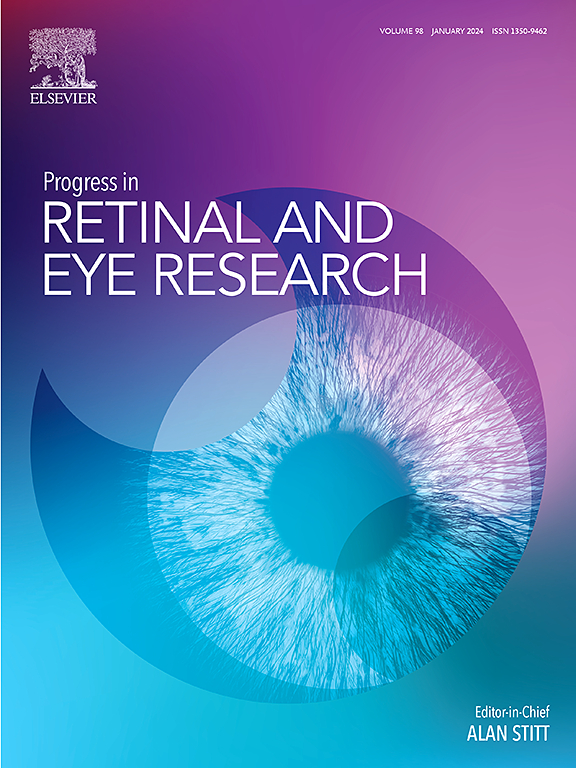Immunomodulatory therapy in non-infectious Uveitis: Current landscape, gaps, and future directions
IF 14.7
1区 医学
Q1 OPHTHALMOLOGY
引用次数: 0
Abstract
Non-infectious uveitis (NIU) is a potentially sight-threatening intraocular inflammatory condition that may arise idiopathically or in association with systemic immune-mediated diseases. While corticosteroids remain essential for rapid suppression of inflammation, their long-term use is limited by significant systemic and ocular side effects. Thus, immunomodulatory therapy (IMT)—including antimetabolites, calcineurin inhibitors, biologics, and emerging small molecules—has become central to achieving sustained control with a reduced corticosteroid burden in chronic cases.
Despite a range of therapeutic options, significant challenges persist. Safe, remission-inducing treatments remain elusive; tapering strategies are poorly standardized; and evidence for optimal combinations or long-term outcomes remains limited. Recent registries, such as Programme for Ocular Inflammation and Infection Translational Research (PROTON) and Treatment Exit Options for Uveitis (TOFU), are beginning to address the unmet need for structured treatment exit frameworks. Moreover, advances in imaging and artificial intelligence may soon enable real-time monitoring of disease status and risk stratification, although the development of large, well-annotated cohorts to be subject to such analysis remains a key hurdle.
This review summarizes the current role of IMT in the management of NIU, with an emphasis on corticosteroid-sparing strategies. We highlight the use of conventional immunosuppressants—including antimetabolites, calcineurin inhibitors, and alkylating agents—as well as newer biologic, smallmolecule, and interferon-based therapies. We outline where IMT fits within the broader treatment algorithm, discuss emerging evidence for earlier initiation, and explore future directions in targeted and personalized immunotherapy. We also explore future directions, including personalized approaches, biomarker-driven therapy, and the promise of AI-guided prediction models.
非感染性葡萄膜炎的免疫调节治疗:现状、差距和未来方向
非感染性葡萄膜炎(NIU)是一种潜在威胁视力的眼内炎症,可能是特发性的,也可能与全身性免疫介导的疾病有关。虽然皮质类固醇对于快速抑制炎症仍然是必不可少的,但它们的长期使用受到严重的全身和眼部副作用的限制。因此,免疫调节疗法(IMT)——包括抗代谢物、钙调磷酸酶抑制剂、生物制剂和新出现的小分子药物——已成为减轻慢性病例皮质类固醇负担并实现持续控制的核心。
本文章由计算机程序翻译,如有差异,请以英文原文为准。
求助全文
约1分钟内获得全文
求助全文
来源期刊
CiteScore
34.10
自引率
5.10%
发文量
78
期刊介绍:
Progress in Retinal and Eye Research is a Reviews-only journal. By invitation, leading experts write on basic and clinical aspects of the eye in a style appealing to molecular biologists, neuroscientists and physiologists, as well as to vision researchers and ophthalmologists.
The journal covers all aspects of eye research, including topics pertaining to the retina and pigment epithelial layer, cornea, tears, lacrimal glands, aqueous humour, iris, ciliary body, trabeculum, lens, vitreous humour and diseases such as dry-eye, inflammation, keratoconus, corneal dystrophy, glaucoma and cataract.

 求助内容:
求助内容: 应助结果提醒方式:
应助结果提醒方式:


